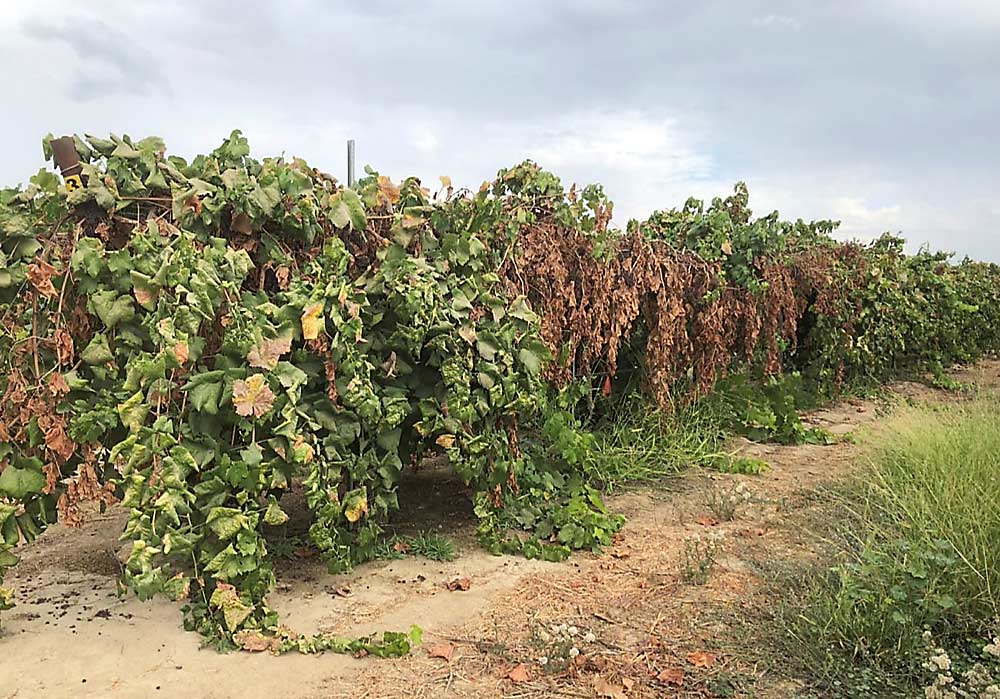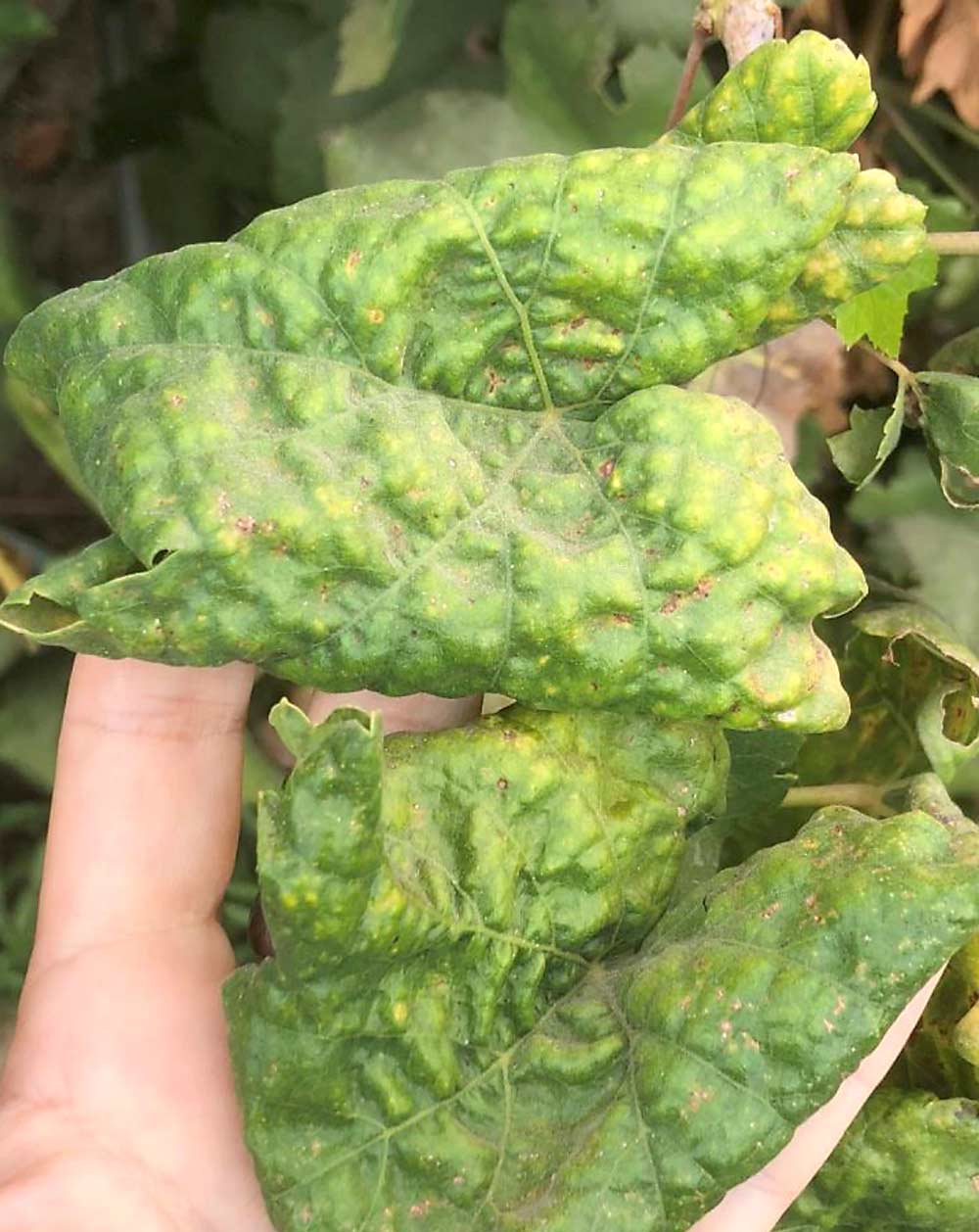
High-profile lawsuits claiming human health risks from the weed killer Roundup have resulted in some wine grape growers receiving pressure from their customers to not use it.
Farmers never welcome losing a tool, but it’s worth remembering — as growers strive to reduce or replace glyphosate — that it was never without its own drawbacks.
“Glyphosate was called a once-in-a-lifetime herbicide. But that doesn’t mean it is perfect; let’s not put this on a pedestal,” said Lynn Sosnoskie, weed scientist at Cornell University. She gave a talk about managing grapes without glyphosate to New York growers at B.E.V. NY, the state’s annual conference for the grape and wine industry, in February. “I don’t want to vilify the product, but I don’t want to deify the product, either. We need to be thinking about integrated weed management.”
Like any pesticide, there are limitations to its efficacy. At last count, 48 weeds worldwide have developed resistance to glyphosate, due to farmers’ overreliance on it. They include seven common in vineyards and nine in orchards, she said, including horseweed, jungle rice and ryegrass in parts of California.
“We have glyphosate resistance in weeds in our orchard and vineyard systems because of how we were using Roundup in them,” Sosnoskie said. “Even without market pressure, we would have to be thinking about how to diversify what we were doing.”
Integrated pest management for weed control includes cultural practices and chemicals, but in her talk she focused on other chemical tools for grape growers. Overreliance on other tools can lead to resistance as well, hence the focus on diversity.
The immediate substitute for glyphosate would be other post-emergent, burndown-type products, but pre-emergent herbicides, which are applied to the soil to inhibit emerging seedlings, will also likely need to be part of a season-long management strategy, Sosnoskie said. A survey she did several years ago while working at Washington State University showed that glyphosate was the most popular herbicide, but more than half of growers used pre-emergents such as Surflan (oryzalin), Matrix (rimsulfuron), Alion (indaziflam) or Chateau (flumioxazin).
She reviewed some product possibilities and the risks and restrictions associated with each. Glyphosate isn’t the only product with risk, she emphasized.
“Anything you do is coming with risk,” she said. “Sending people out to hand weed in 100-degree weather — there’s risk associated with that, too.”
For burndown use, products include Aim (carfentrazone), Select (clethodim), Fusilade (fluazifop), Rely (glufosinate), Gramoxone (paraquat) and Poast (sethoxydim), many of which come with warnings or restricted uses. Paraquat has new federal restrictions requiring handler certification and specialized paraquat training and testing, along with closed-container system management required this fall, she said.
Broadly, it’s important to remember that good coverage and weed size are key to getting effective action.
“We need to treat them at sensitive growth stages,” Sosnoskie said. Growers should be mindful of vine age and bearing restrictions with some of these post-emergent products as well.

On the pre-emergent side, the goal is to preempt the weeds and get the products on the ground before the weeds emerge. Because the herbicides must be applied before weeds emerge, it is crucial that growers engage in good record keeping to ensure that their products are targeting their weed communities effectively, she said. Prowl (pendimethalin) has better efficacy against grasses, for example, than a broad-spectrum such as Matrix (rimsulfuron).
“You are really reliant on how well you’ve taken down that information on what’s there,” Sosnoskie said. She recommends researching the products before developing tank mixes, to bolster efficacy.
It’s also important to clear leaf litter to get good soil contact for the application. And some products need rainfall for activation.
“Just because these are soil-applied herbicides doesn’t mean they can’t cause injury potential to the grapes,” she said. “We have to be really mindful of how we are using herbicides.”
Many, including Alion (indaziflam), for example, can damage young grape vines. Its use is restricted in New York, based on soils, vine age, planting depth and other factors.
This season, Sosnoskie hopes to connect with grape and other specialty crop growers around New York to survey for herbicide-resistant weeds and learn more about existing weed management practices and challenges.
—by Kate Prengaman






Leave A Comment